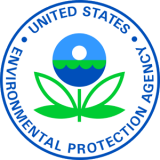2019 Midwest Floods: EPA-FEMA Agreement Will Support Rapid Recovery and Restoration of Water Infrastructure After Disasters Strike
Environmental News
FOR IMMEDIATE RELEASE

“This first-of-its-kind MOU with FEMA will give disaster-stricken communities expedited access to federal funds that will aid in their rebuilding process by helping to restore vital infrastructure and water services in times of disaster,” said EPA Administrator Andrew Wheeler. “This MOU is another way the Trump administration is working to help communities and utilities prepare for and respond to natural disasters and other emergencies.”
“Disasters are locally executed, state-managed, and federally supported, so we are pleased to work with EPA to provide local communities with additional resources to help them in their times of need,” said Acting FEMA Administrator Pete Gaynor.
“This is great news for the state of Iowa and every community recovering from severe floods that occurred earlier this year,” said Iowa Governor Kim Reynolds. “The Memorandum of Understanding with the EPA and FEMA allows Iowa access to critical funds for the restoration of vital drinking water and wastewater infrastructure. We appreciate this administration’s focus on recovery efforts and coming to the aid of rural communities fighting to come back stronger than ever.”
“This comes as welcomed news for our Midwest states that have been hit hard by the spring 2019 floods,” said EPA Region 7 Administrator Jim Gulliford. “The flexibility to use state revolving funds to restore vital water infrastructure, coupled with the opportunity to seek reimbursement from FEMA, is a win-win for our communities.”
-
Encourages a tribe or local government to access a no-interest or low-interest loan from its state revolving fund to help pay for the restoration of vital drinking water and wastewater infrastructure.
- Allows for loan repayments, state match, and interest earnings that are state funds to be reimbursed by FEMA.
- Allows the SRFs to act as cost-sharing financing sources for a municipality applying for FEMA disaster assistance grant funding.
- Encourages Clean Water and Drinking Water SRF programs to provide non-federal funds for the purposes of FEMA Cost Share or Interim Loans.
Immediately after a disaster, communities and tribes typically incur expenses for life safety, cleanup, and other disaster-related operations. By securing a loan through this MOU early on after a disaster, a community would not need to expend its own funds first. Normally, communities have to pay out of pocket and wait to receive a reimbursement through a FEMA grant for eligible expenses or wait for an emergency supplemental appropriation for disaster relief and recovery from Congress.
Background
Under the Clean Water and Drinking Water State Revolving Fund (SRF) programs, EPA provides funding to all 50 states and Puerto Rico to capitalize SRF loan programs. SRF programs provide low-interest loans and additional subsidies to public, private and nonprofit entities for eligible drinking water and wastewater treatment facilities and a wide variety of other water and wastewater infrastructure projects. Through loan repayments and investment earnings, the SRFs have leveraged these contributions to provide more than $170 billion in financial assistance to over 39,900 water quality infrastructure projects and 14,500 drinking water projects across the country.
EPA recently announced the availability of nearly $2.6 billion in additional SRF funds to assist states, tribes and territories with improving drinking water and wastewater infrastructure across the country. This funding advances President Trump’s efforts to rebuild the country’s aging water infrastructure, create local jobs, and ensure all Americans have safe and clean water.
To read the memorandum and learn more, visit EPA’s website.
# # #
Learn more about EPA Region 7
View all Region 7 news releases
Connect with EPA Region 7 on Facebook: www.facebook.com/eparegion7
Follow us on Twitter: @EPARegion7
